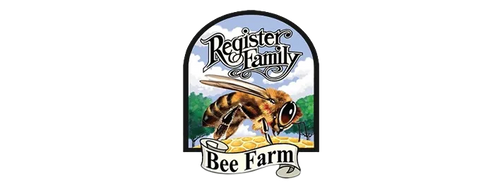We overwinter our bees in south Florida, where the warmth keeps them active throughout most of the winter months. The initial Brazilian Pepper bloom gives our bees a great head start for the cold months, but we have to monitor them carefully (especially the queens!) to make sure they will survive the winter and thrive in the spring. A good flow here means even our weaker hives should be able to come back and do just fine through the winter.
The Last Big Bloom
The Brazilian Pepper tree is an invasive bush in southern Florida, but it doesn't do well in the cold. This means that it never really makes it any farther north than Orlando in large quantities, so we have a pretty lengthy commute moving our bees down and maintaining our hives. That's a lot of time on the road and makes for a pretty hectic schedule.
About a week after we initially take them south, we check the hives to get an idea of how much they will produce over the course of the flow. We then add a number of honey supers to each hive that should give them plenty of storage space. We continue to monitor the hives for health and storage space until it is time to pull the honey for extraction.
Brazilian Pepper pollen is very high in protein, and our bees pack as much as they can into the hive for the coming winter months. Like most blooms, Brazilian pepper lasts for about 3-4 weeks, and after that, the bees will have to forage on the lower-yielding wildflowers blooming throughout the mild South Florida winter.
Settling in for the Winter
Unlike northern bees that become inactive through the winter bunched in a heat-saving clump in their hive, ours will maintain a lowered level of activity due to the warmer temperatures. Bees won't really fly or maintain activity outside the hive if the temperature dips much below 50 degrees Fahrenheit. Keeping our bees busy helps keep them strong, as they continue gathering nectar and pollen through most of the winter.
Even in South Florida, our hives will lower their populations. They'll kick out most of the drones to preserve resources, and the queen will lay fewer eggs. The queen will kick her egg laying into high gear again in late December to early January in preparation for the bloom of some early pollen producers such as red maple.
Keeping Our Queens Healthy
Since we usually only get one strong year out of our queens, we have to keep a close eye on their health and productivity. We order our queens from a breeder and will replace them as necessary.
Hives with older queens are more likely to swarm in the spring, and if she runs out of fertilized eggs, she'll only lay drones. Excessive drone to worker bee ratios are detrimental and, without beekeeper intervention, usually fatal to a colony as the drones consume resources without participating in the collection and storage of nectar and pollen.
With a strong, productive queen and a good flow of Brazilian Pepper nectar and pollen, our hives can stay healthy throughout the slow winter. In the meantime, we can use our time for maintenance and building new equipment to get ready for the next big move in the spring.
